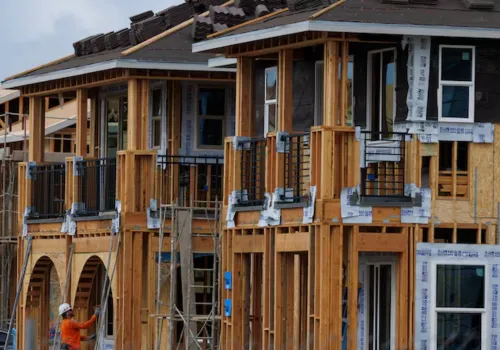
U.S. construction spending declined for the second consecutive month in May as elevated mortgage rates and increased housing inventory continued to dampen demand for new single-family homes.

According to the Commerce Department's Census Bureau, construction spending fell by 0.3% in May following an upwardly revised 0.2% decline in April. The drop was slightly steeper than what economists had forecast, with a Reuters poll predicting a 0.2% decrease. On a year-over-year basis, construction outlays were down 3.5%.
Private construction spending fell by 0.5%, driven by a 0.5% drop in residential investment. Notably, spending on new single-family home construction sank by 1.8%.
“Mortgage rates have remained elevated as tariffs on imported goods have raised economic uncertainty, prompting the Federal Reserve to pause its interest rate cutting cycle,” the report noted. Housing inventory levels have now climbed to levels last seen in 2007, further cooling new construction activity.

A recent survey by the National Association of Home Builders showed builder confidence deteriorating, with sentiment among single-family homebuilders hitting a two-and-a-half-year low in June. “It forecast a decline in single-family starts this year,” the report added.
Meanwhile, spending on multi-family housing units remained flat, and investment in private non-residential construction—such as office buildings and factories—declined by 0.4%.
Public construction, however, offered a slight offset. While state and local spending remained flat, federal construction spending jumped 1.0%, contributing to an overall 0.1% rise in public sector investment.
This marks a continued trend of softening in the U.S. construction industry, especially in the housing market, which is struggling under the weight of high borrowing costs and sluggish demand. Developers are increasingly cautious, delaying or canceling new starts, especially in the single-family sector, which has traditionally been a key driver of private construction activity.
Looking ahead, industry analysts will be closely watching how future interest rate decisions, inventory levels, and broader economic signals affect builder sentiment and spending patterns. With federal infrastructure projects still moving forward, some relief may come from the public sector, but the private residential market faces ongoing headwinds.
Originally reported by Reuters.